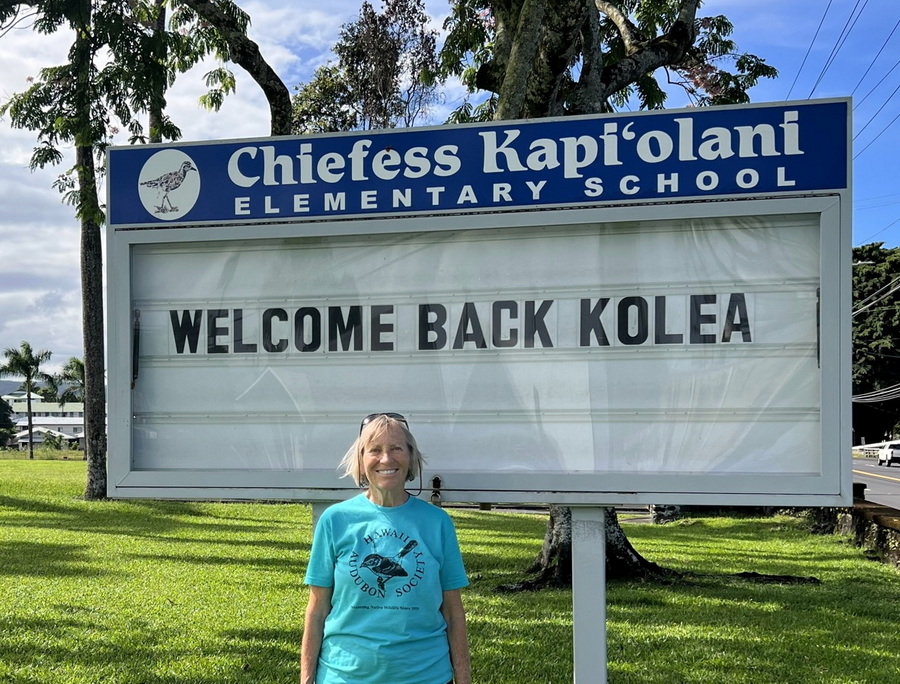
During an August 10th Hilo visit, Hawaii Audubon board members Dr. Wendy Kuntz and Susan Scott, (me, in photo) admire this school’s welcome sign for its mascot, the Kōlea. ©Wendy Kuntz
December 12, 2022
Does a GPS signal interfere with a Kōlea’s migration? That was the question Wally Johnson set out to answer in March when he and a team of researchers and volunteers tagged 30 Kōlea at Punchbowl Cemetery (March 30 NEWS.) All 30 birds were fitted with colored leg bands for identification. In addition, 10 birds carried live GPS backpack devices, and 10 carried dummy backpacks. Ten had no backpacks at all.
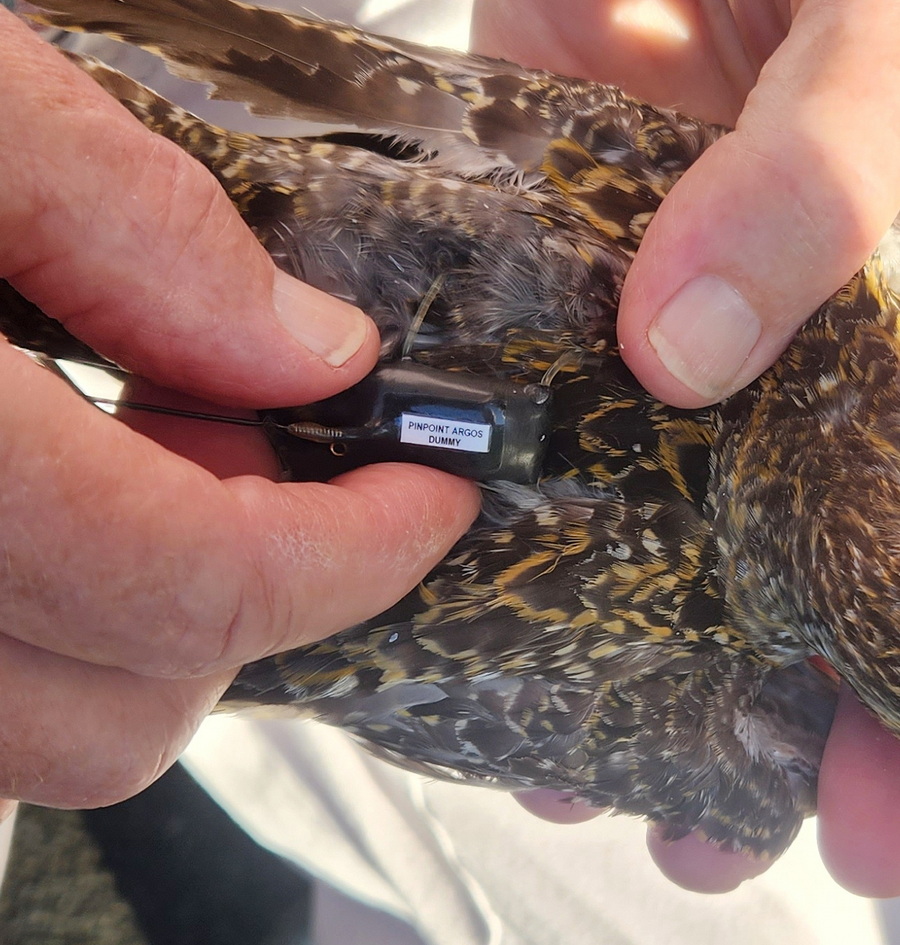
This bird carried, round trip, a GPS tag labeled DUMMY. It was the same weight and size as the live tags, but did not transmit a signal. ©Susan Scott
By the end of April-early May, all 30 birds had migrated. Then came the waiting, and the nut of the investigation: Which of the study birds would return to Punchbowl?
Hawaii Audubon volunteers answered the call to find out. Armed with cameras and binoculars, Kōlea watchers took turns driving through Punchbowl almost daily from mid-July through September to look for, and record, the study-birds that had made the round trip.
The result gave Wally photographic evidence to the question of whether GPS signals sent to satellites from tiny transmitters the birds carried on their backs interfered with their migration: The answer is no.
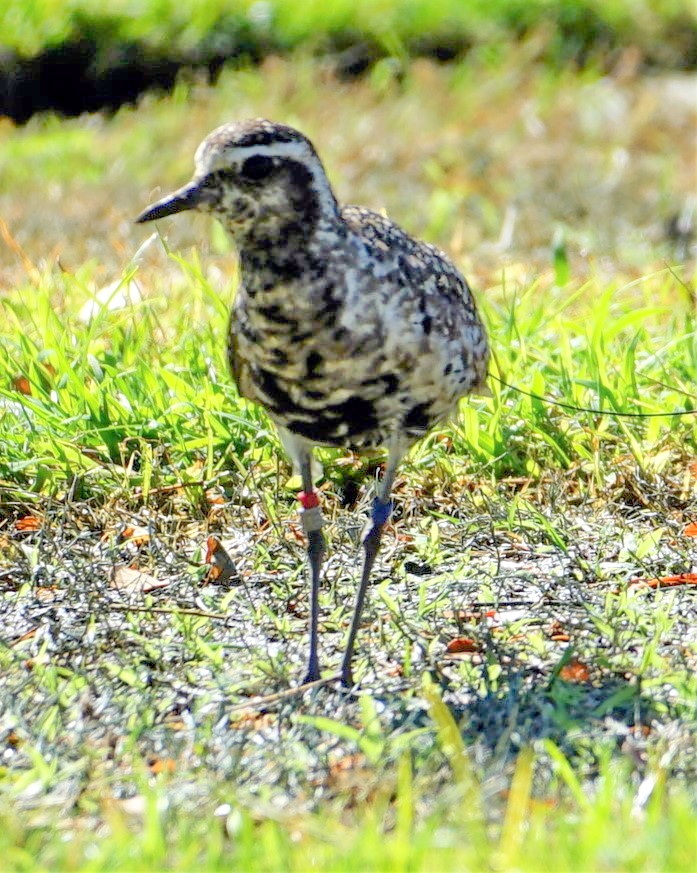
This male, nicknamed Mr. Necker, flew to Alaska, then Russia, then to Necker Island in the Papahanaumokuakea Marine National Monument where his signal stopped. The team was surprised and delighted to recapture him in Punchbowl Cemetery on October 10th in the exact spot he was tagged in March. We know the bird’s sex from his springtime feather colors, not his above October colors. ©Susan Scott
The birds with transmitting backpacks, dummy backpacks, and no backpacks returned this fall at about the same rate: 80 percent. Wally Johnson reported this finding—that GPS locating signals have no apparent negative effects—in the 2022 summary of the Alaska Shorebird Group.
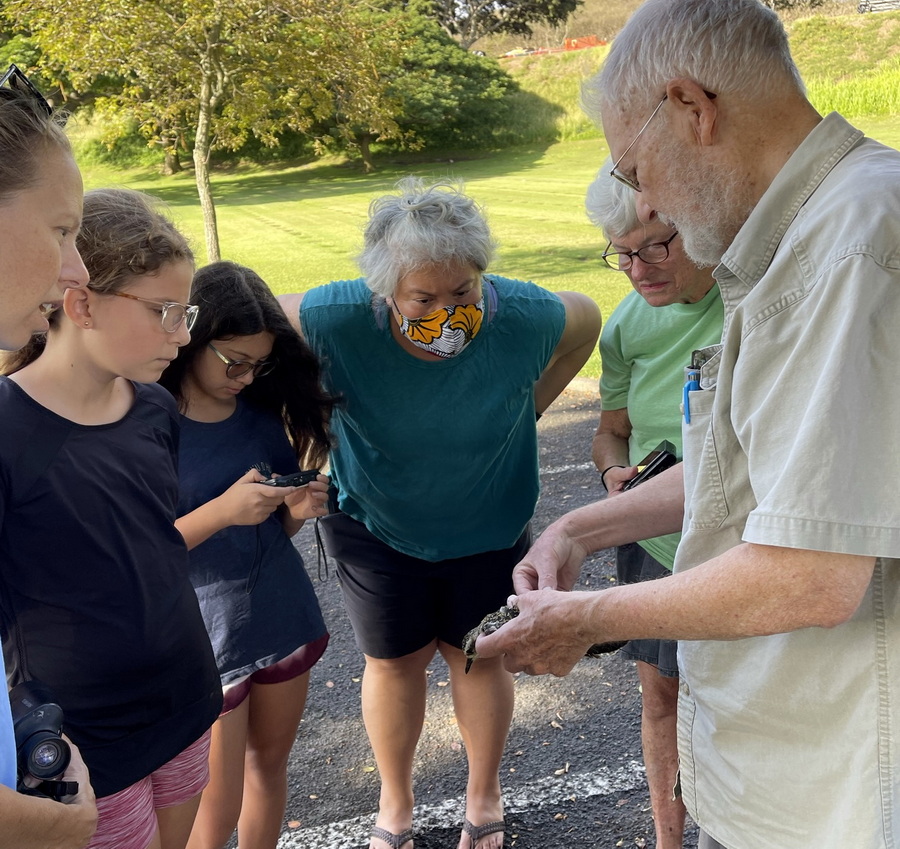
A large part, and purpose, of Kōlea research is teaching. Here’s Wally shows volunteers and students a recaptured plover’s flight feathers. ©Susan Scott
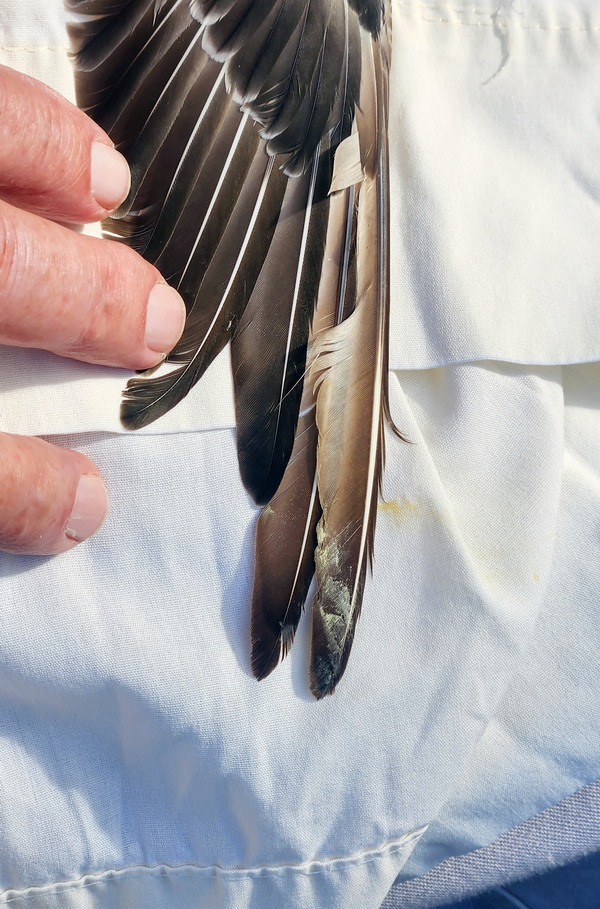
Wally shows volunteers and students the wear on a kōlea’s flight feathers. The bird will drop these hard-used feathers and grow new ones, but gradually, so as to not lose its ability to fly. ©Susan Scott
Both the Alaska Shorebird Group and the Hawaii Audubon Society’s Kōlea Count are part of a hui (partnership) of public and private organizations with similar goals: to raise public awareness of shorebirds, promote their management and conservation, and give researchers and volunteers a place to share information. Participants have a wide range of backgrounds but all care deeply about Pacific Golden-Plovers, and other shorebird species, in their tropical wintering grounds as well as their Arctic breeding grounds.
In October, Wally Johnson returned to the Punchbowl sites, and along with an even larger volunteer team, worked for weeks to retrieve the bird’s backpacks.
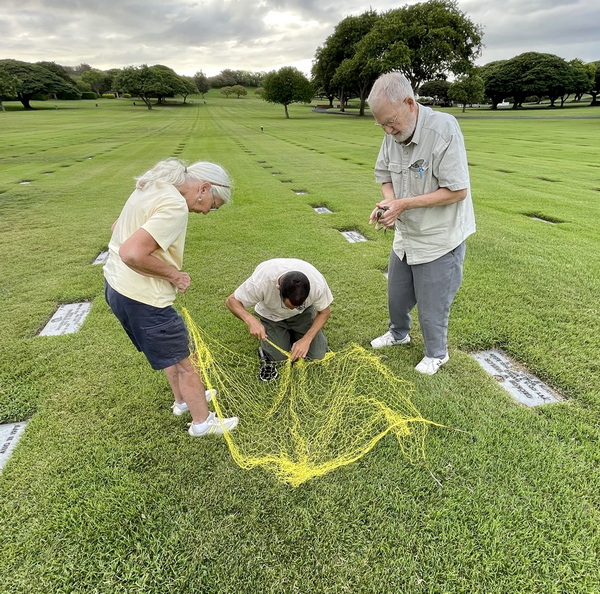
Wally Johnson, above right, holds a study plover recaptured in a netgun net expertly operated by Joshua Fisher, a biologist with the U.S. Fish and Wildlife Service. Volunteer Diane Smith is helping furl the net. ©Susan Scott
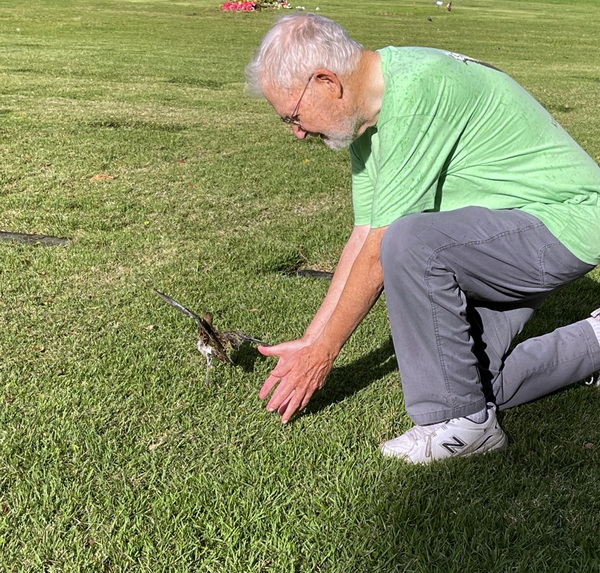
A joyful moment for all: Wally releasing a recaptured Kōlea after removing its backpack, . ©Susan Scott
The study plovers’ colored leg bands are visible with binoculars when driving through Punchbowl Cemetery. Spotting one of these birds, as well as other Kōlea that prance around our yards and parks, is a thrill, especially when we remember that most have travelled at least 6,000 miles annually, some for 20 or more years, to spend winters in Hawaii. It’s a cheery reminder of how lucky we are to share these amazing islands with their amazing native birds.
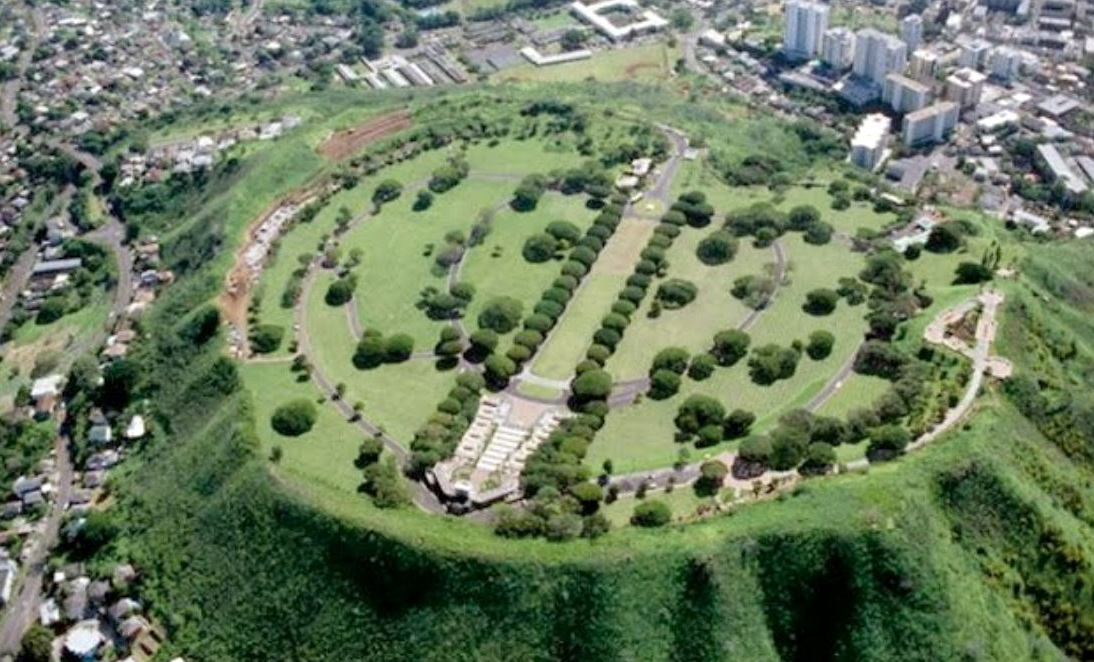
Honolulu’s National Memorial Cemetery of the Pacific fills the inside of an ancient volcanic crater named Punchbowl Crater. From 70-to-80 Kōlea spend winters there, each bird returning to its precise site year after year. The cemetery is divided into sections labeled with letters of the alphabet, A – X.
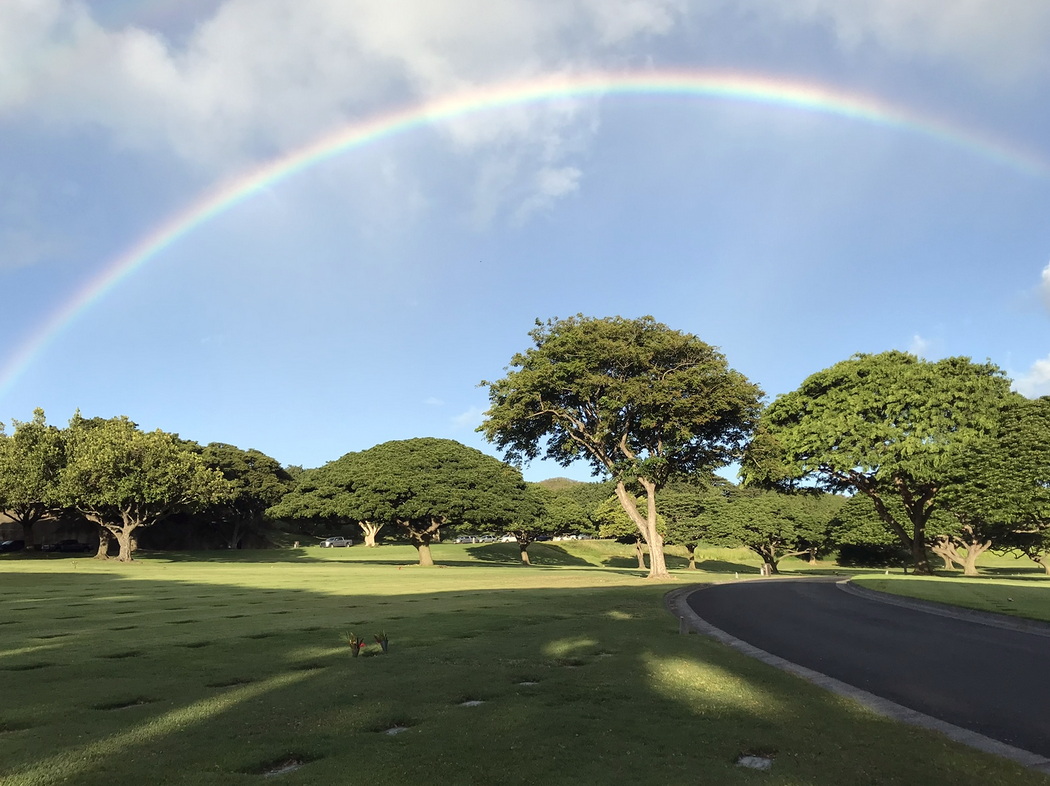
If you visit Kōlea at this scenic landmark, please be respectful of this memorial honoring the men and women who served in the United States Armed Forces, and those who gave their lives in doing so. ©Sigrid Southworth